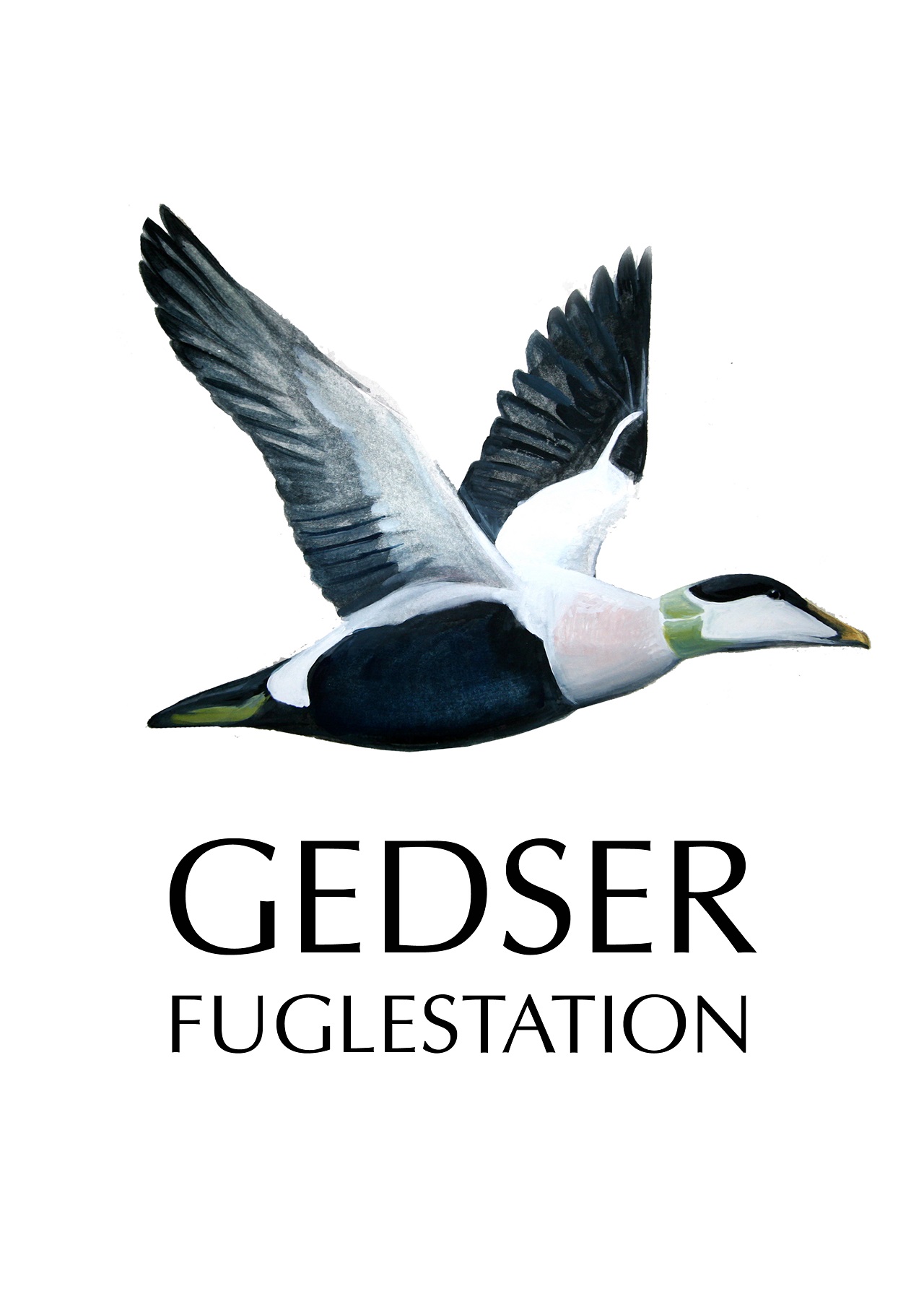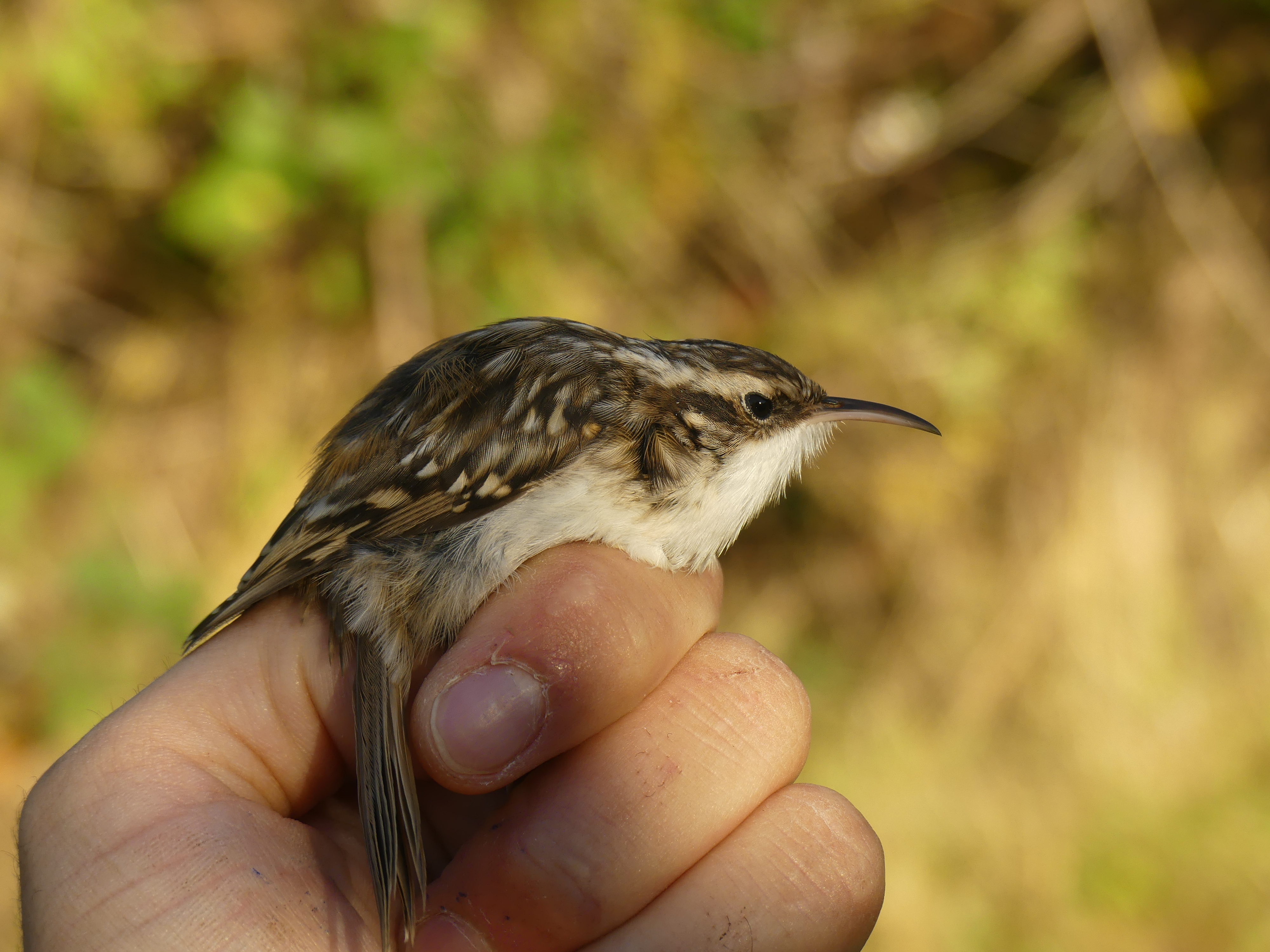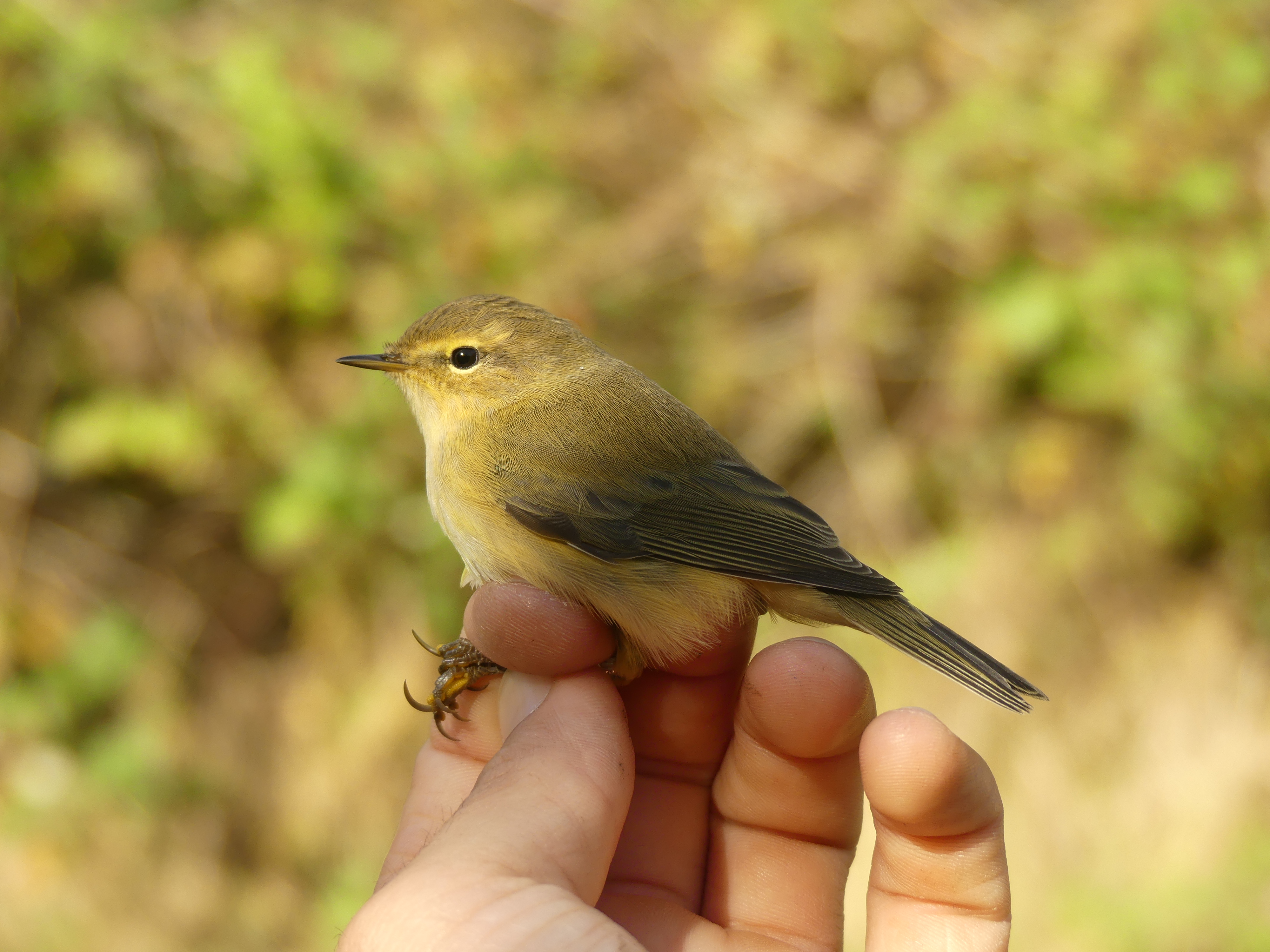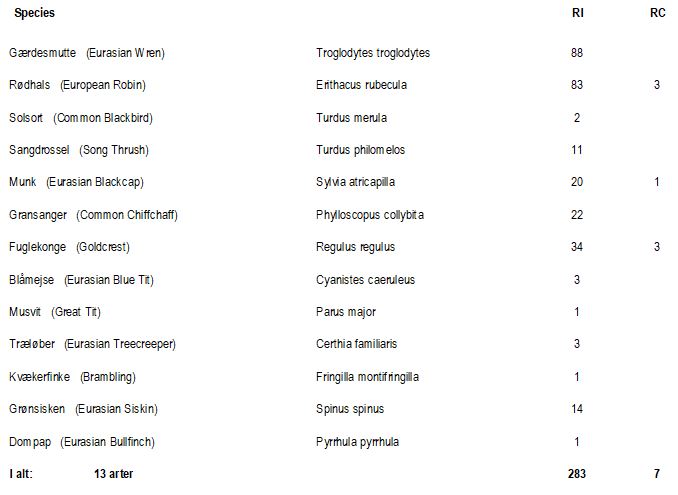Gedser Fuglestation Blog
Her på Gedser Fuglestations blog bringes korte nyheder i dagbogsformat om hændelser på fuglestationen.
Wrens, Eiders, and some other birds...
Ringmærkning:
This morning, Susanne, Lise and I were surprised to find lots of Wrens (Gærdesmutte) in the first net. We quickly realised that it was going to be a busy morning ! At 7:15am, I took my place in the lab to ring all the birds, while Susanne and Lise did the rounds non-stop until 9:30am — it was intense ! The second part of the morning was less intense; the sun came out and we had some Siskins (Grønsisken) and 3 Eurasian treecreepers (Træløber) in the nets.
Eurasian treecreepers (Træløber), foto Théophile Fontaine
The most abundant species were the Wrens (Gærdesmutte) and Robins (Rødhals), but we also had the pleasure of catching some beautiful species, such as a young male Brambling (Kvækerfinke) and an adult male Bullfinch (Dompap). However, the highlight of the day was undoubtedly the female Blackcap (Munk) with a ring from the Czech Republic !
No pictures of Wren, but here is a Chiffchaff (Gransanger) ! Foto Théophile Fontaine
It seems that the abundance of each species is changing; over the last two or three days, we have caught more Thrushes (Drossels) and Blackcaps (Munk), with 11 Song Thrushes (Sangdrossel) and 20 Blackcaps (Munk) this morning. The same applies to the Wrens (Gærdesmutte) and Robins (Rødhals). On the other hand, Goldcrests (Fuglekonge) have been more discreet these past few days.
I’m curious to see what the north wind will bring us in the coming days.
Trækket på Odden: It was a lovely day out on the point, which makes me all the sadder to be leaving! This was my last morning counting migration before leaving Gedser for the season, so it was nice to finish with sunshine and calm seas.
We saw 44 species this morning, which is quite amazing. However, it was still a fairly quiet day, as it was often just a few individuals per species – there were 2300 individuals in total.
Eiders (Ederfugl) still dominated the day, with some 1400 individuals. We had more waders than in previous days, with a few flocks of Dunlins (Almindelig ryle), Sanderlings (Sandløber), and Golden Plover (Hjejle). Also notable were the Common Gulls (Stormmåge) and Black-headed Gulls (Hættemåge) which seem to be continuing their migration. We are beginning to see higher numbers of Barnacle Geese (Bramgås) – we had 147 today!
There were also several flocks of passerine birds out at the tip today, including many beautiful Goldfinch (Stillits). They like to land on the dried flowers around the edge of the field behind us while deciding whether to migrate or not. They have a charming, metallic call, which is instantly recognisable and is our cue to take a break from the sea and look for them!
It's been a very enjoyable experience learning to count the migration here and I think I will miss sunrises by the ocean here at Gedser very much! It has definitely inspired me to learn and watch more ducks and seabirds back home in Australia. Two more days of ringing for me, and then I will have to say goodbye to Gedser – until the next time!
Folk på stationen: Lise Mastrup, Grace Marsh, Susanne Primdahl, Théophile Fontaine og Ole Friis Larsen





